Islington may have played its own small part in the destruction and conquest by England of north Wales. In December 1277 the last native prince of Wales, Llywelyn the Last, while staying in Islington in preparation of his ritual act of homage to the English king, was so heinously offended by the display put on by the locals that he and his men started fighting
He was born at Austin Friars, London, 11 May 1730. The appearance of the Great Comet of 1744
11 May 1730. The appearance of the Great Comet of 1744  gave him, then a schoolboy at Geneva, a permanent bias towards astronomy; he diligently prepared, however, for a mercantile career in counting-houses at Geneva, Leghorn, and Genoa, and visited Rome in the jubilee year (1750). Returning to London in 1751, he was in the following year taken into partnership by his father. In 1753 he became a director, and some years later governor, of the London Assurance Company. He was elected a fellow of the Royal Society in 1772, and of the Society of Antiquaries in 1784.
gave him, then a schoolboy at Geneva, a permanent bias towards astronomy; he diligently prepared, however, for a mercantile career in counting-houses at Geneva, Leghorn, and Genoa, and visited Rome in the jubilee year (1750). Returning to London in 1751, he was in the following year taken into partnership by his father. In 1753 he became a director, and some years later governor, of the London Assurance Company. He was elected a fellow of the Royal Society in 1772, and of the Society of Antiquaries in 1784.
In 1793 he received a diploma of admission to the St. Petersburg Academy of Sciences. He observed the transit of Venus of 3 June 1769 at Austin Friars,
observed the transit of Venus of 3 June 1769 at Austin Friars,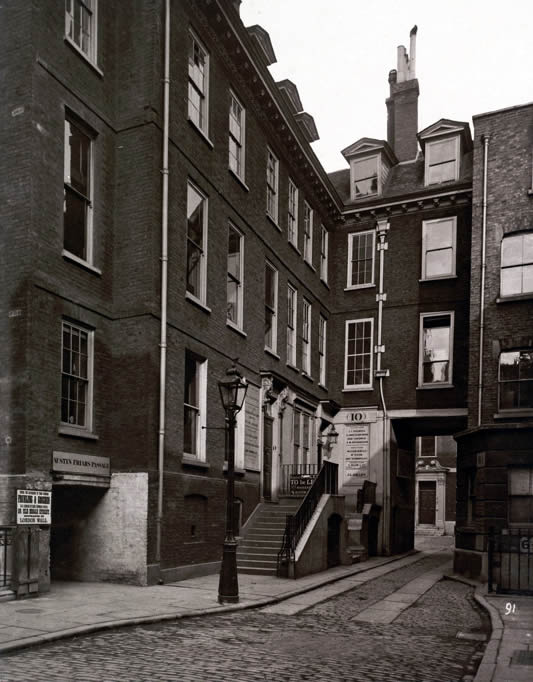 and that of Mercury, 4 May 1786 at an observatory built by him at Loampit Hill, near Deptford
and that of Mercury, 4 May 1786 at an observatory built by him at Loampit Hill, near Deptford , and furnished with the best instruments by Short, Bird,
, and furnished with the best instruments by Short, Bird,  Ramsden, and Dollond. Except that of Count Brühl,
Ramsden, and Dollond. Except that of Count Brühl,  it was at that period the only well-equipped private establishment of the kind in England.
it was at that period the only well-equipped private establishment of the kind in England. In 1788 he purchased Highbury House, Islington,
In 1788 he purchased Highbury House, Islington,
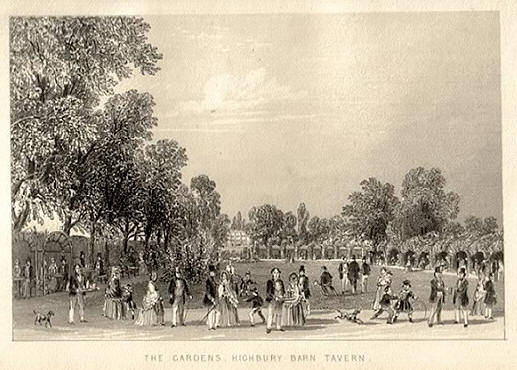 for 6,000 guineas, and erected on the grounds, with the assistance of his friend John Smeaton,
for 6,000 guineas, and erected on the grounds, with the assistance of his friend John Smeaton,  the celebrated engineer, a new observatory on improved plans of his own.
the celebrated engineer, a new observatory on improved plans of his own.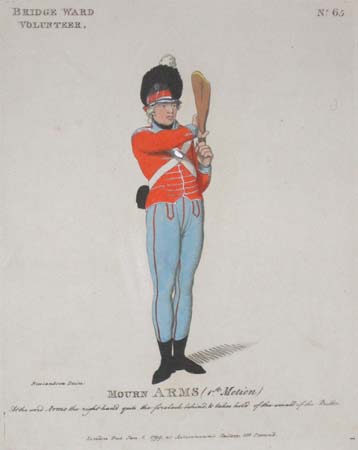
His mechanical knowledge caused him to be appointed chairman of the trustees for the completion of Ramsgate harbour, and his energy contributed materially to the ultimate success of Smeaton's designs. In 1792 Aubert headed a society for the suppression of sedition, and in 1797 he organised, and was appointed lieutenant-colonel of, the 'Loyal Islington Volunteers.' While staying in the house of Mr. John Lloyd, of Wygfair, St. Asaph,
and his energy contributed materially to the ultimate success of Smeaton's designs. In 1792 Aubert headed a society for the suppression of sedition, and in 1797 he organised, and was appointed lieutenant-colonel of, the 'Loyal Islington Volunteers.' While staying in the house of Mr. John Lloyd, of Wygfair, St. Asaph,  he was struck with apoplexy, and died 19 October 1805, at the age of 75, highly esteemed both in scientific and commercial circles, and widely popular, owing to his genial
he was struck with apoplexy, and died 19 October 1805, at the age of 75, highly esteemed both in scientific and commercial circles, and widely popular, owing to his genial  manners and unstinted hospitality. His valuable astronomical library and instruments were sold and dispersed after his death. Amongst the latter were a Dollond 46-inch achromatic, aperture 3¾ inches, and the one Cassegrain reflector
manners and unstinted hospitality. His valuable astronomical library and instruments were sold and dispersed after his death. Amongst the latter were a Dollond 46-inch achromatic, aperture 3¾ inches, and the one Cassegrain reflector  constructed by Short, of 24 inches focus and 6 aperture, known among opticians as 'Short's Dumpy.' Both had been originally made for Topham Beauclerk.
constructed by Short, of 24 inches focus and 6 aperture, known among opticians as 'Short's Dumpy.' Both had been originally made for Topham Beauclerk.
.
In 1276, Edward declared Llywelyn a rebel and in 1277, gathered an enormous army to march against him. Edward's intention was to disinherit Llywelyn completely and take over Gwynedd Is Conwy himself. He was considering two options for Gwynedd Uwch Conwy: either to divide it between Llywelyn's brothers, Dafydd and Owain, or to annex Anglesey and divide only the mainland between the two brothers. Edward was supported by Dafydd ap Gruffydd and Gruffydd ap Gwenwynwyn. Many of the lesser Welsh princes who had supported Llywelyn now hastened to make peace with Edward. By the summer of 1277, Edward's forces had reached the River Conwy and encamped at Deganwy, while another force had captured Anglesey and took possession of the harvest there. This deprived Llywelyn and his men of food, forcing them to seek terms.
Treaty of Aberconwy
The continuation of Essex Road to Newington Green connected it with Green Lanes, also thought to be ancient. The continuations of the 12th-century routes from London, St. John Street
Lanes, also thought to be ancient. The continuations of the 12th-century routes from London, St. John Street 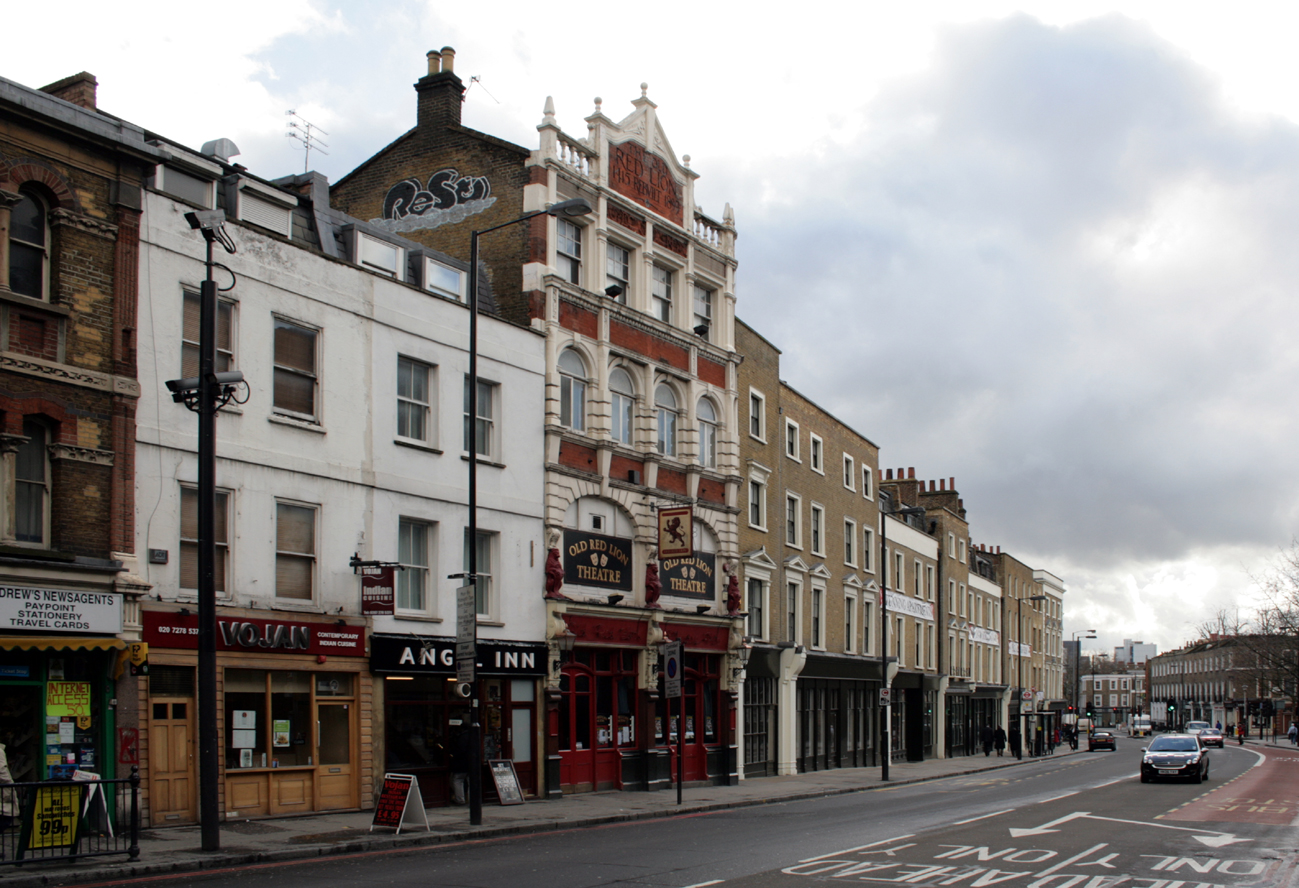 from west Smithfield and Goswell Street from Aldersgate, joined just before entering Islington near the Angel.
from west Smithfield and Goswell Street from Aldersgate, joined just before entering Islington near the Angel.  It is therefore likely that the Great North Road, of which Aldersgate was the start, also existed at that time, running along Upper Street into Holloway Road
It is therefore likely that the Great North Road, of which Aldersgate was the start, also existed at that time, running along Upper Street into Holloway Road . Before the 14th century it was thought to have left the parish northward along Tallington or Tollington Lane (also called Devil's Lane and later Hornsey Road) to Crouch End, but by 1300 the route had become as important as Ermine Street and was so impassable that a new road was made up Highgate Hill; the bishop was claiming a toll by 1318 and inhabitants of Islington were granted pavage to repair the road up the hill in 1380. (fn. 13) The name Holwey was used for the district around the road by 1307. (fn. 14) A road known as the Back Road, later Liverpool Road, ran from High Street to Ring Cross bypassing Upper Street by the late 16th century, (fn. 15) and connecting with lanes across the western part of the parish. It was particularly useful for large herds of cattle bound for Smithfield market, which were penned overnight in layers along its length
. Before the 14th century it was thought to have left the parish northward along Tallington or Tollington Lane (also called Devil's Lane and later Hornsey Road) to Crouch End, but by 1300 the route had become as important as Ermine Street and was so impassable that a new road was made up Highgate Hill; the bishop was claiming a toll by 1318 and inhabitants of Islington were granted pavage to repair the road up the hill in 1380. (fn. 13) The name Holwey was used for the district around the road by 1307. (fn. 14) A road known as the Back Road, later Liverpool Road, ran from High Street to Ring Cross bypassing Upper Street by the late 16th century, (fn. 15) and connecting with lanes across the western part of the parish. It was particularly useful for large herds of cattle bound for Smithfield market, which were penned overnight in layers along its length
From: 'Islington: Communications', A History of the County of Middlesex: Volume 8: Islington and Stoke Newington parishes (1985),
.The 18th-century village of Islington was once a hub of dairy farming, supplying much of London's milk. It was a place of healthy recreation for city-dwellers, with its clean air and the fresh water spas which developed around the New River, built in 1609 to 1613 to bring fresh water from Hertfordshire to London. In the early 19th century, as more houses were needed, country estates were broken up and the second wave of London's great network of residential garden squares took shape
to 1613 to bring fresh water from Hertfordshire to London. In the early 19th century, as more houses were needed, country estates were broken up and the second wave of London's great network of residential garden squares took shape

his lords resolved never to return and thenceforth to fight England to the death.[Still earlier, Islington is thought to be the site of Boudica's last battle with the Romans, the Battle of Watling Street in AD 60 or 61. 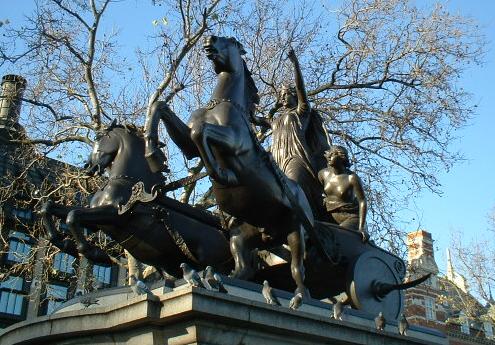 Although Lewis Spence's book on the subject has been dismissed for lack of evidence, it is of note that no more convincing alternative exists.
Although Lewis Spence's book on the subject has been dismissed for lack of evidence, it is of note that no more convincing alternative exists.  Accepting Spence's book and taking the lay of the land described in Tacitus,Barnard Park (at the corner of Copenhagen St and Barnsbury Road in Islington) is likely to be the site of Boudica's defeat.s believed that a Roman road from Cripplegate to St. Albans ran through Islington along the line of Prebend Street and Highbury Grove to Stroud Green,
Accepting Spence's book and taking the lay of the land described in Tacitus,Barnard Park (at the corner of Copenhagen St and Barnsbury Road in Islington) is likely to be the site of Boudica's defeat.s believed that a Roman road from Cripplegate to St. Albans ran through Islington along the line of Prebend Street and Highbury Grove to Stroud Green, QBOwqd7rB,w~~60_12.JPG) (possibly following an earlier track, but no firm evidence has been found. Two roads linking Islington with London were known as 'streets' c. 1170 (and the northern part of Essex Road was called Seveney Street in the 16th century, perhaps indicating a Roman origin.
(possibly following an earlier track, but no firm evidence has been found. Two roads linking Islington with London were known as 'streets' c. 1170 (and the northern part of Essex Road was called Seveney Street in the 16th century, perhaps indicating a Roman origin. 
Aubert Park
Alexander Aubert (1730-1805) was a
businessman and astronomer. He moved his
observatory from near Greenwich to Highbury
House in 1788. This was said to be one of the
finest observatories in Britain containing a
telescope designed by James Short; this was
known as “Short’s Dumpy”. In 1797 Aubert set
up a volunteer corps, the Loyal Islington
Volunteers, to protect Islington in the case of a
Napoleonic invasionHe was born at Austin Friars, London,
 11 May 1730. The appearance of the Great Comet of 1744
11 May 1730. The appearance of the Great Comet of 1744  gave him, then a schoolboy at Geneva, a permanent bias towards astronomy; he diligently prepared, however, for a mercantile career in counting-houses at Geneva, Leghorn, and Genoa, and visited Rome in the jubilee year (1750). Returning to London in 1751, he was in the following year taken into partnership by his father. In 1753 he became a director, and some years later governor, of the London Assurance Company. He was elected a fellow of the Royal Society in 1772, and of the Society of Antiquaries in 1784.
gave him, then a schoolboy at Geneva, a permanent bias towards astronomy; he diligently prepared, however, for a mercantile career in counting-houses at Geneva, Leghorn, and Genoa, and visited Rome in the jubilee year (1750). Returning to London in 1751, he was in the following year taken into partnership by his father. In 1753 he became a director, and some years later governor, of the London Assurance Company. He was elected a fellow of the Royal Society in 1772, and of the Society of Antiquaries in 1784.
In 1793 he received a diploma of admission to the St. Petersburg Academy of Sciences. He
 observed the transit of Venus of 3 June 1769 at Austin Friars,
observed the transit of Venus of 3 June 1769 at Austin Friars, , and furnished with the best instruments by Short, Bird,
, and furnished with the best instruments by Short, Bird,  Ramsden, and Dollond. Except that of Count Brühl,
Ramsden, and Dollond. Except that of Count Brühl,  it was at that period the only well-equipped private establishment of the kind in England.
it was at that period the only well-equipped private establishment of the kind in England. In 1788 he purchased Highbury House, Islington,
In 1788 he purchased Highbury House, Islington,
 for 6,000 guineas, and erected on the grounds, with the assistance of his friend John Smeaton,
for 6,000 guineas, and erected on the grounds, with the assistance of his friend John Smeaton,  the celebrated engineer, a new observatory on improved plans of his own.
the celebrated engineer, a new observatory on improved plans of his own.
His mechanical knowledge caused him to be appointed chairman of the trustees for the completion of Ramsgate harbour,
 and his energy contributed materially to the ultimate success of Smeaton's designs. In 1792 Aubert headed a society for the suppression of sedition, and in 1797 he organised, and was appointed lieutenant-colonel of, the 'Loyal Islington Volunteers.' While staying in the house of Mr. John Lloyd, of Wygfair, St. Asaph,
and his energy contributed materially to the ultimate success of Smeaton's designs. In 1792 Aubert headed a society for the suppression of sedition, and in 1797 he organised, and was appointed lieutenant-colonel of, the 'Loyal Islington Volunteers.' While staying in the house of Mr. John Lloyd, of Wygfair, St. Asaph,  he was struck with apoplexy, and died 19 October 1805, at the age of 75, highly esteemed both in scientific and commercial circles, and widely popular, owing to his genial
he was struck with apoplexy, and died 19 October 1805, at the age of 75, highly esteemed both in scientific and commercial circles, and widely popular, owing to his genial  manners and unstinted hospitality. His valuable astronomical library and instruments were sold and dispersed after his death. Amongst the latter were a Dollond 46-inch achromatic, aperture 3¾ inches, and the one Cassegrain reflector
manners and unstinted hospitality. His valuable astronomical library and instruments were sold and dispersed after his death. Amongst the latter were a Dollond 46-inch achromatic, aperture 3¾ inches, and the one Cassegrain reflector  constructed by Short, of 24 inches focus and 6 aperture, known among opticians as 'Short's Dumpy.' Both had been originally made for Topham Beauclerk.
constructed by Short, of 24 inches focus and 6 aperture, known among opticians as 'Short's Dumpy.' Both had been originally made for Topham Beauclerk..

In 1276, Edward declared Llywelyn a rebel and in 1277, gathered an enormous army to march against him. Edward's intention was to disinherit Llywelyn completely and take over Gwynedd Is Conwy himself. He was considering two options for Gwynedd Uwch Conwy: either to divide it between Llywelyn's brothers, Dafydd and Owain, or to annex Anglesey and divide only the mainland between the two brothers. Edward was supported by Dafydd ap Gruffydd and Gruffydd ap Gwenwynwyn. Many of the lesser Welsh princes who had supported Llywelyn now hastened to make peace with Edward. By the summer of 1277, Edward's forces had reached the River Conwy and encamped at Deganwy, while another force had captured Anglesey and took possession of the harvest there. This deprived Llywelyn and his men of food, forcing them to seek terms.
Treaty of Aberconwy
The continuation of Essex Road to Newington Green connected it with Green
 Lanes, also thought to be ancient. The continuations of the 12th-century routes from London, St. John Street
Lanes, also thought to be ancient. The continuations of the 12th-century routes from London, St. John Street  from west Smithfield and Goswell Street from Aldersgate, joined just before entering Islington near the Angel.
from west Smithfield and Goswell Street from Aldersgate, joined just before entering Islington near the Angel.  It is therefore likely that the Great North Road, of which Aldersgate was the start, also existed at that time, running along Upper Street into Holloway Road
It is therefore likely that the Great North Road, of which Aldersgate was the start, also existed at that time, running along Upper Street into Holloway Road . Before the 14th century it was thought to have left the parish northward along Tallington or Tollington Lane (also called Devil's Lane and later Hornsey Road) to Crouch End, but by 1300 the route had become as important as Ermine Street and was so impassable that a new road was made up Highgate Hill; the bishop was claiming a toll by 1318 and inhabitants of Islington were granted pavage to repair the road up the hill in 1380. (fn. 13) The name Holwey was used for the district around the road by 1307. (fn. 14) A road known as the Back Road, later Liverpool Road, ran from High Street to Ring Cross bypassing Upper Street by the late 16th century, (fn. 15) and connecting with lanes across the western part of the parish. It was particularly useful for large herds of cattle bound for Smithfield market, which were penned overnight in layers along its length
. Before the 14th century it was thought to have left the parish northward along Tallington or Tollington Lane (also called Devil's Lane and later Hornsey Road) to Crouch End, but by 1300 the route had become as important as Ermine Street and was so impassable that a new road was made up Highgate Hill; the bishop was claiming a toll by 1318 and inhabitants of Islington were granted pavage to repair the road up the hill in 1380. (fn. 13) The name Holwey was used for the district around the road by 1307. (fn. 14) A road known as the Back Road, later Liverpool Road, ran from High Street to Ring Cross bypassing Upper Street by the late 16th century, (fn. 15) and connecting with lanes across the western part of the parish. It was particularly useful for large herds of cattle bound for Smithfield market, which were penned overnight in layers along its lengthFrom: 'Islington: Communications', A History of the County of Middlesex: Volume 8: Islington and Stoke Newington parishes (1985),
.The 18th-century village of Islington was once a hub of dairy farming, supplying much of London's milk. It was a place of healthy recreation for city-dwellers, with its clean air and the fresh water spas which developed around the New River, built in 1609
 to 1613 to bring fresh water from Hertfordshire to London. In the early 19th century, as more houses were needed, country estates were broken up and the second wave of London's great network of residential garden squares took shape
to 1613 to bring fresh water from Hertfordshire to London. In the early 19th century, as more houses were needed, country estates were broken up and the second wave of London's great network of residential garden squares took shape
 Although Lewis Spence's book on the subject has been dismissed for lack of evidence, it is of note that no more convincing alternative exists.
Although Lewis Spence's book on the subject has been dismissed for lack of evidence, it is of note that no more convincing alternative exists.  Accepting Spence's book and taking the lay of the land described in Tacitus,Barnard Park (at the corner of Copenhagen St and Barnsbury Road in Islington) is likely to be the site of Boudica's defeat.s believed that a Roman road from Cripplegate to St. Albans ran through Islington along the line of Prebend Street and Highbury Grove to Stroud Green,
Accepting Spence's book and taking the lay of the land described in Tacitus,Barnard Park (at the corner of Copenhagen St and Barnsbury Road in Islington) is likely to be the site of Boudica's defeat.s believed that a Roman road from Cripplegate to St. Albans ran through Islington along the line of Prebend Street and Highbury Grove to Stroud Green, 

 Borough Council. The layout of the gardens changed in the 1950s, when it was described as 'London's most beautiful square' by the Evening Standard.
Borough Council. The layout of the gardens changed in the 1950s, when it was described as 'London's most beautiful square' by the Evening Standard.  The square is surrounded by reproduction railings, the originals having been lost during World War II. The planting was improved by Loire Valley Wines in 2006, with roses, lavender and a small vineyard at its centre. Famous former residents include writers Evelyn Waugh and George Orwell, and artists Duncan Grant and Vanessa Bell
The square is surrounded by reproduction railings, the originals having been lost during World War II. The planting was improved by Loire Valley Wines in 2006, with roses, lavender and a small vineyard at its centre. Famous former residents include writers Evelyn Waugh and George Orwell, and artists Duncan Grant and Vanessa Bell .The gardens were opened by poet laureate Sir John Betjeman in 1975. In the far corner is a paved area with seating, which features a stone frieze by Musgrove Watson, who also designed the bronze reliefs at the base of Nelson's Column in Trafalgar Square. The frieze was originally made for the Hall of Commerce in Threadneedle Street in 1842. To the north of the gardens is Waterloo Terrace, built on land which was once part of the botanic garden of Dr William Pitcairn, President of the Royal College of Physicians from 1775 to 1785.Barnsbury was a medieval manor, and a moated farm once stood on the site of the current square. The name is derived from that of Ralph de Berners, whose family owned the manor until the early 16th century. In the early 19th century, the lord of the manor, William Tufnell began to lease land for development to various speculative builders. The square was central to the Bishop Estate, developed from 1834 mainly by Thomas Whowell, who built and lived in Mountfort Crescent from 1841. The square gardens were laid out as 'ornamental pleasure grounds' for the private use of residents. In 1889 the Metropolitan Public Gardens Association (MPGA) purchased the lease and opened the gardens to the public, but ownership disputes after the lease expired in 1909 led to decline and damage over the next decade. The gardens were finally conveyed to Islington Council by deed poll in 1933, restored with funds from the MPGA and reopened to the public in 1934. It was redesigned in the 1960s and 70s with raised beds, a small pavilion and new railings
.The gardens were opened by poet laureate Sir John Betjeman in 1975. In the far corner is a paved area with seating, which features a stone frieze by Musgrove Watson, who also designed the bronze reliefs at the base of Nelson's Column in Trafalgar Square. The frieze was originally made for the Hall of Commerce in Threadneedle Street in 1842. To the north of the gardens is Waterloo Terrace, built on land which was once part of the botanic garden of Dr William Pitcairn, President of the Royal College of Physicians from 1775 to 1785.Barnsbury was a medieval manor, and a moated farm once stood on the site of the current square. The name is derived from that of Ralph de Berners, whose family owned the manor until the early 16th century. In the early 19th century, the lord of the manor, William Tufnell began to lease land for development to various speculative builders. The square was central to the Bishop Estate, developed from 1834 mainly by Thomas Whowell, who built and lived in Mountfort Crescent from 1841. The square gardens were laid out as 'ornamental pleasure grounds' for the private use of residents. In 1889 the Metropolitan Public Gardens Association (MPGA) purchased the lease and opened the gardens to the public, but ownership disputes after the lease expired in 1909 led to decline and damage over the next decade. The gardens were finally conveyed to Islington Council by deed poll in 1933, restored with funds from the MPGA and reopened to the public in 1934. It was redesigned in the 1960s and 70s with raised beds, a small pavilion and new railings
No comments:
Post a Comment